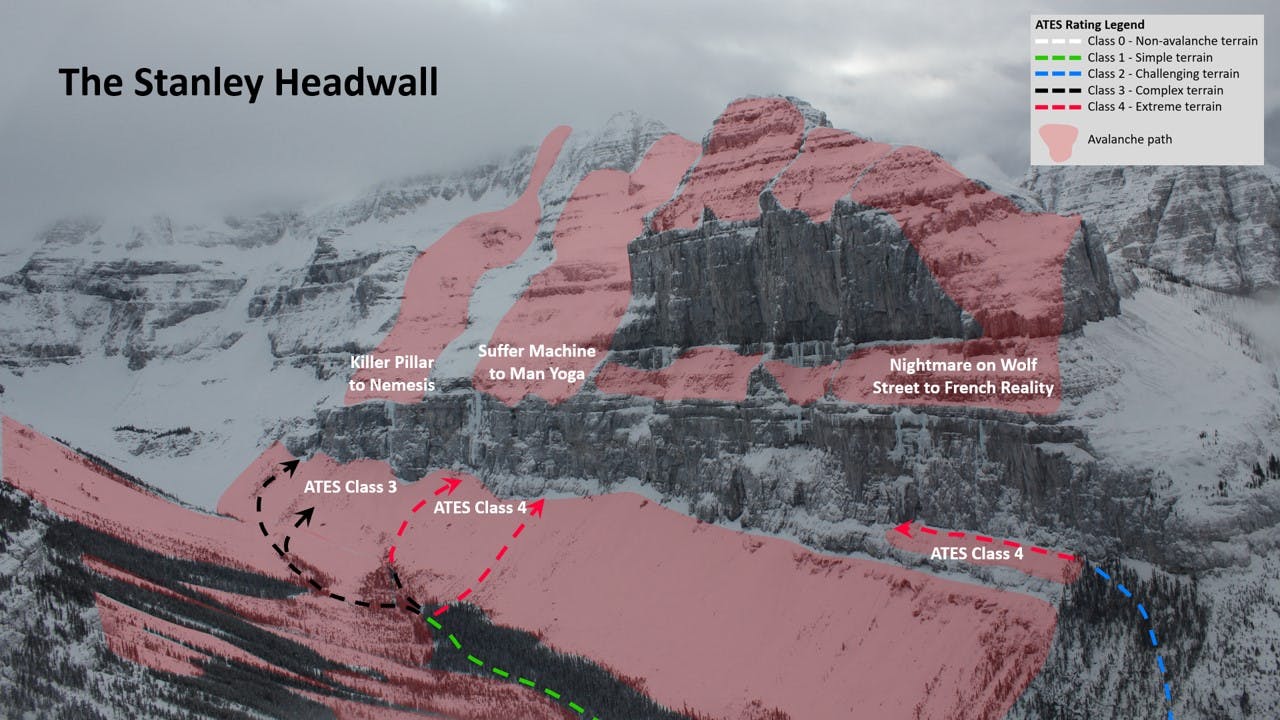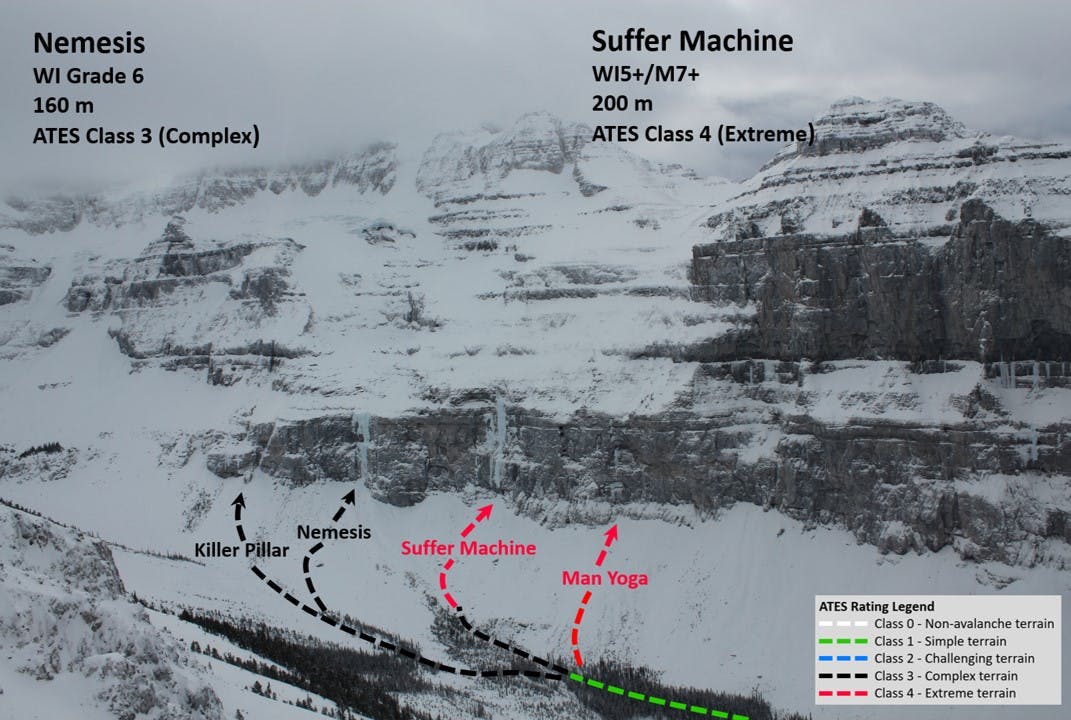
An overview of the Stanley Headwall.
Nemesis
160m WI6
Killer Pillar Sector
ATES 3 (Complex)
The Stanley Headwall is home to some of the Canadian Rockies' hardest and finest mixed testpieces. Located in Kootenay National Park, it is generally accessed through Banff National Park. The approach to the Stanley Headwall can take 1.5–2 hours, depending on snow conditions, fitness level, and whether you're using skis or snowshoes.
This sector is found the furthest back in the Stanley drainage. Nemesis is a classic, popular Grade 6 testpiece and Killer Pillar offers many difficult one-pitch mixed routes. Sinus Gully (an easier mixed route) is also found in this sector.
Popularity
- 20 people completed the survey
- 25% climbed it once
- 20% climbed it 2–5 times
- 55% climbed it more than five times
Avalanche frequency
- 25% have not seen any avalanche debris
- 50% have seen avalanche debris less than half the time they climbed the route
- 25% have seen debris more than 50% of the time to always
- 35% have witnessed an avalanche in the area
Runout debris
- 80% of respondents saw avalanche debris on the approach.
- 60% saw debris at the base of the climb or lower
- 7% saw debris in between the pitches of climbing
- 13% saw debris above the last pitch

Notes on avalanche debris:
- Debris depths ranged from size 1 to size 4
- 50 m to 150 m wide
- Ranged from half way down the slope to full length of slope to approach trail
Trigger
- 100% of respondents said natural
Reported avalanches and incidents
- I have witnessed avalanches over Nemesis multiple times, including from the road.
- While leading the last pitch of Nemesis, during a warming afternoon, a significant avalanche poured over the cliffs just off to the right of me, maybe 10 meters away.
- During a summer ascent of the Kahl Route on Stanley Peak, I witnessed a massive wet avalanche. It roared down the upper mountain, across the plateau, and off the headwall. We were just about back at our camp in the tree island up the valley when the massive avalanche kicked off. We thought it was going to kill us but there is a bend in the gully that diverted the avalanche away from us. We thought it was a big enough avalanche to jump over the sidewall of the gully, but thankfully it did not. The day was 30° C. We were very late getting back to camp because we hid under some rocks on the face due to the quickly changing nature of the snowpack. Eventually we decided to go rock to rock until we made it to the summit. On the way down, we ended up finding a massive deposit of trilobites which were incredible. I shared photographs of the trilobites with the world's leading expert on trilobites. He said they are the best example of those trilobites he has ever seen.
- I have seen avalanches from the road.
Contributing factors
- 67% of respondents say new snow amounts were a contributing factor
- 67% say winds
- 56% say significant warming
Other notes and summary
- I think this climb is exposed to overhead hazard, but it has to be a very large avalanche coming off the north face of Mt. Stanley. Immediately above Nemesis, the terrain is low angled up to the base of the glacier, so there is quite a large bench above the climb that would protect it. I also think the approach slopes are not steep enough to avalanche, but I need to check this. I do not think of being able to trigger avalanches on the approach (except maybe right near the top, just below the routes).
- It's an interesting zone. I suspect bigger slides may come from looker's left, and off the very top.
